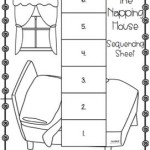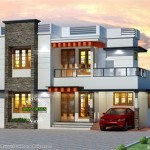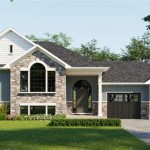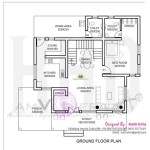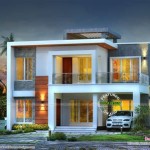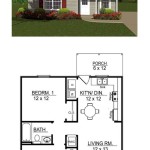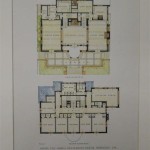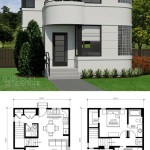Modern Loft Home Floor Plans
Modern loft home floor plans represent a unique blend of industrial aesthetics and contemporary design. Characterized by open spaces, high ceilings, and exposed structural elements, these floor plans offer a flexible and stylish living experience. This article explores the key features and considerations involved in choosing a modern loft floor plan.
Key Features of Modern Loft Floor Plans
Several key features distinguish modern loft floor plans from traditional home designs:
- Open Concept Layouts: Walls are minimized, creating a seamless flow between living, dining, and kitchen areas.
- High Ceilings: Soaring ceilings contribute to a sense of spaciousness and allow for dramatic architectural features.
- Exposed Structural Elements: Features like exposed brick, ductwork, and pipes add an industrial chic aesthetic.
- Large Windows: Ample natural light is a hallmark of loft living, enhancing the open and airy feel.
- Flexible Spaces: The open nature of lofts allows for easy customization and adaptation to changing needs.
Considerations When Choosing a Modern Loft Floor Plan
Selecting the right loft floor plan requires careful consideration of various factors:
- Lifestyle: The open-plan design may not suit everyone's privacy preferences.
- Noise Control: Sound travels easily in open spaces, which can be a concern.
- Heating and Cooling: Efficient climate control is crucial in large, open areas with high ceilings.
- Storage Solutions: Lack of traditional walls necessitates creative storage solutions.
Maximizing Space in a Modern Loft
Efficient space utilization is essential in a loft environment. Here are some strategies to consider:
- Vertical Space: Utilize tall bookshelves and vertical storage units to maximize vertical space.
- Multi-Functional Furniture: Invest in furniture that serves multiple purposes, such as sofa beds or ottomans with storage.
- Room Dividers: Strategically placed room dividers can create visual separation without sacrificing openness.
Lighting Design in Modern Lofts
Lighting plays a crucial role in enhancing the ambiance and functionality of a loft space.
- Natural Light: Maximize natural light by keeping window treatments minimal.
- Ambient Lighting: Install recessed lighting or track lighting for overall illumination.
- Task Lighting: Use pendant lights or table lamps to provide focused light for specific activities.
- Accent Lighting: Highlight architectural features or artwork with strategically placed accent lights.
Industrial Design Elements
Incorporating industrial design elements can enhance the authentic loft aesthetic.
- Exposed Brick: Restore original brick walls or use brick veneer for an industrial touch.
- Metal Accents: Incorporate metal furniture, lighting fixtures, or decorative accents.
- Concrete Flooring: Polished concrete floors create a sleek and industrial look.
- Reclaimed Wood: Use reclaimed wood for flooring, shelving, or accent walls.
Modern Loft Styles
Various design styles can be incorporated into a modern loft, allowing for personalized expression.
- Minimalist: Embrace clean lines, simple furnishings, and a neutral color palette.
- Mid-Century Modern: Combine iconic mid-century furniture with industrial elements.
- Bohemian: Add eclectic textiles, vibrant colors, and global-inspired décor.
- Scandinavian: Focus on functionality, natural materials, and a light and airy aesthetic.
Benefits of Open-Concept Living
The open-concept layout of modern lofts offers several advantages:
- Enhanced Social Interaction: The open floor plan facilitates interaction and communication between family members and guests.
- Sense of Spaciousness: The absence of walls creates an illusion of a larger space.
- Flexibility: The open layout allows for easy reconfiguration of furniture and adaptation to changing needs.
- Abundant Natural Light: Open spaces maximize the penetration of natural light throughout the loft.
Privacy Considerations in Loft Design
While open-concept living offers many benefits, addressing privacy concerns is essential.
- Strategic Furniture Placement: Carefully position furniture to create defined zones within the open space.
- Room Dividers: Utilize screens, curtains, or open shelving units as room dividers.
- Mezzanine Levels: Consider incorporating a mezzanine level for added privacy and functionality.
- Partial Walls: Construct partial walls to define specific areas without completely closing off the space.
Adapting Loft Living to Different Lifestyles
Loft living can be adapted to suit various lifestyles and needs.
- Families with Children: Create designated play areas and incorporate child-friendly furniture.
- Working Professionals: Designate a dedicated workspace with appropriate lighting and storage.
- Empty Nesters: Embrace a minimalist approach and prioritize comfort and functionality.
- Artists and Creatives: Utilize the open space as a studio or workshop.

Modern Urban Loft House Plan By Mark Stewart Home Design

Loft House Design Floor Area 48 Sqm

Modern Urban Loft House Plan By Mark Stewart Home Design

Studio And 1 Bedroom Apartment Floor Plans The Lofts On La Brea Layout Loft

20 House Plans With Lofts Tiny Small Luxury Designs Blog Homeplans Com

Perfect For Your Budget 2 Bedroom Modern Loft House Cool Concepts

City Loft Floor Plan Interior Design Ideas

Small Cabin House Plans With Loft And Porch For Fall Houseplans Blog Com

Plan 80937pm Stately 2 Bed Contemporary House With Loft Plans

Modern Loft House 16 Pinoy Plans

